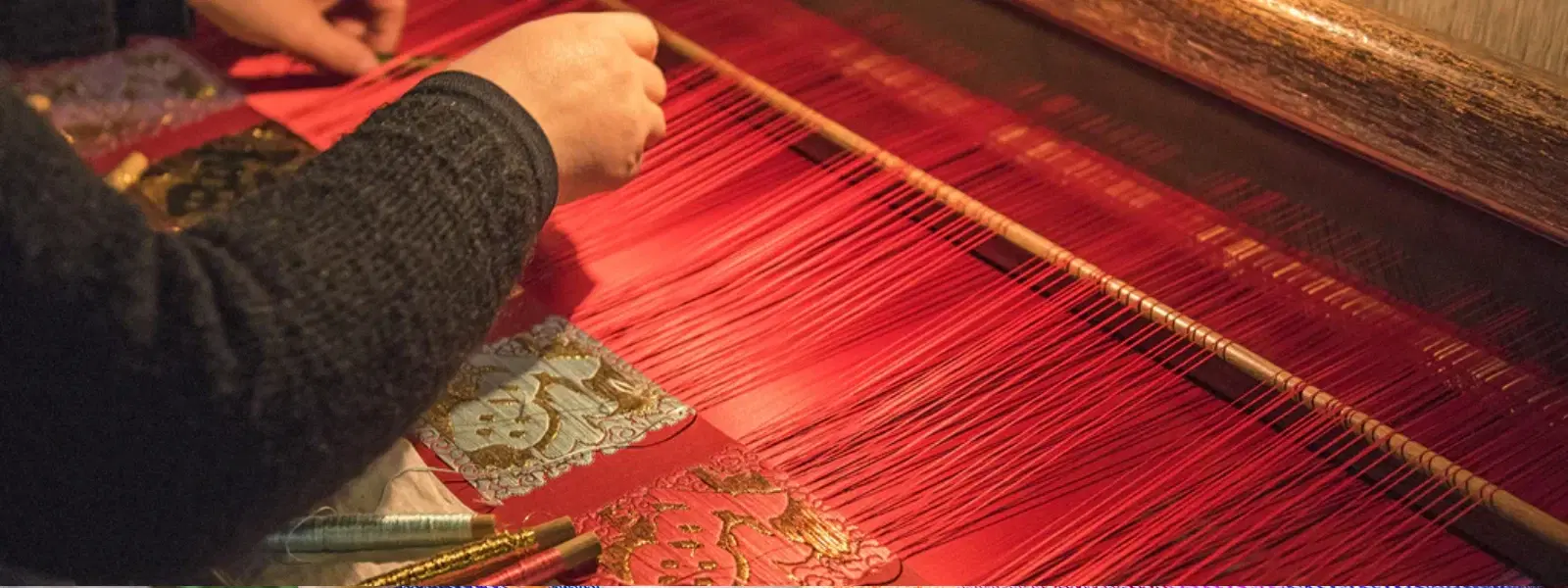
Hotels
•03 min read

Patan Patola silk weaving heritage in Gujarat is a mesmerizing journey into the heart of India's ancient textile traditions. In the bustling lanes of Patan, where each thread carries a story of heritage and artistry, the exquisite Patan Patola sarees stand as a testament to timeless craftsmanship. This blog post aims to answer frequently asked questions about Patan Patola silk weaving, exploring its origins, unique processes, and cultural significance, while inviting you to experience the intricate details that make this craft truly extraordinary.
Dating back to the 11th century, Patan Patola weaving is an ancient practice deeply embedded in Gujarat’s rich cultural tapestry. The art blossomed in the historic town of Patan, where generations of skilled artisans have passionately preserved the craft. These weavers, with their agile fingers and keen eyes, meticulously pass down techniques that have remained virtually unchanged over centuries.
Historically, Patan Patola sarees were a prized possession among royalty and aristocrats. They were more than just garments; they were symbols of status, opulence, and refined taste. During numerous cultural and religious ceremonies in Gujarat, these vibrant handloom silk sarees played a pivotal role, adorning celebrations with their intricate designs and colorful patterns.
At the core of traditional Patola weaving is the extraordinary double ikat technique. This method requires every thread to be individually dyed before the weaving process begins, ensuring that the designs invariably mirror each other on both sides of the fabric. Such unparalleled precision makes every Patan Patola saree a masterpiece of Indian silk craftsmanship.
The process of creating a Patan Patola saree is labor-intensive and demands a great deal of patience and precision. It starts with the careful selection and preparation of premium silk threads, followed by the meticulous dyeing process. The weaving itself is a dance of skill and timing, where aligning the complex patterns might take months to perfect. These ancient weaving techniques have been handed down from masters to apprentices, ensuring that each creation retains a unique character.

The cost of Patan Patola sarees is a reflection of the significant time, skill, and exquisite raw materials invested in each piece. The painstaking double ikat process, which is central to traditional Patola weaving, creates reversible designs that are revered worldwide. Compared to other heritage textiles of Gujarat, these sarees embody an unmatched level of precision and detail, making them highly coveted among connoisseurs of handloom silk sarees.
Did You Know? The double ikat technique used in Patan Patola weaving is so precise that the patterns look identical on both sides of the fabric, a feat unmatched in other weaving traditions.
Patan Patola sarees are celebrated for their distinctive patterns and motifs. Traditional designs include elephants, graceful floral patterns, and complex geometric shapes, each carrying its own symbolic meaning. The elephants might represent strength and wisdom, while floral designs often symbolize beauty and the blossoming of life. The precision and intentionality of these motifs contribute greatly to the fabric’s overall elegance.
The allure of Patan Patola extends far beyond the borders of India. Renowned as one of the finest examples of Indian silk craftsmanship, these sarees have graced exhibitions and prestigious museums worldwide. They are recognized not only for their visual appeal but also for the remarkable story of tradition and artisanal mastery behind every piece, making them a global symbol of heritage textiles of Gujarat.
Today, numerous initiatives by local artisans, NGOs, and government bodies are underway to safeguard this invaluable craft. One notable effort is the Patan Patola Heritage Museum, which plays a key role in educating the public about the history and process behind these magnificent fabrics. By fostering a deeper understanding among the younger generation, these programs help ensure the survival of traditional Patola weaving techniques.

Despite its prestige, the Patan Patola silk weaving tradition faces significant challenges. Dwindling numbers of skilled artisans and fierce competition from machine-made alternatives pose serious threats. Supporting this heritage is crucial—purchasing authentic handloom silk sarees not only preserves an art form but also honors the legacy of the dedicated craftsmen behind these creations.
Patan Patola is renowned for its intricate double ikat weaving technique, vibrant patterns, and unmatched craftsmanship that results in reversible designs.
The Patan Patola saree is the most famous textile from Patan, celebrated for its heritage and artistry.
The high cost is due to the labor-intensive double ikat technique, the use of premium silk, and the months-long weaving process that requires exceptional skill.
Patan, a historic town in Gujarat, is known for its colorful Patola weaving patterns and its role as the hub of this craft.
In summary, the Patan Patola silk weaving heritage in Gujarat offers a rich tapestry of history, meticulous craftsmanship, and cultural legacy. This timeless art form remains an emblem of Indian silk artistry, echoing the passion and perseverance of its weavers. By understanding and supporting traditional Patola weaving, admirers and collectors can contribute to preserving a unique piece of India's illustrious textile tradition.